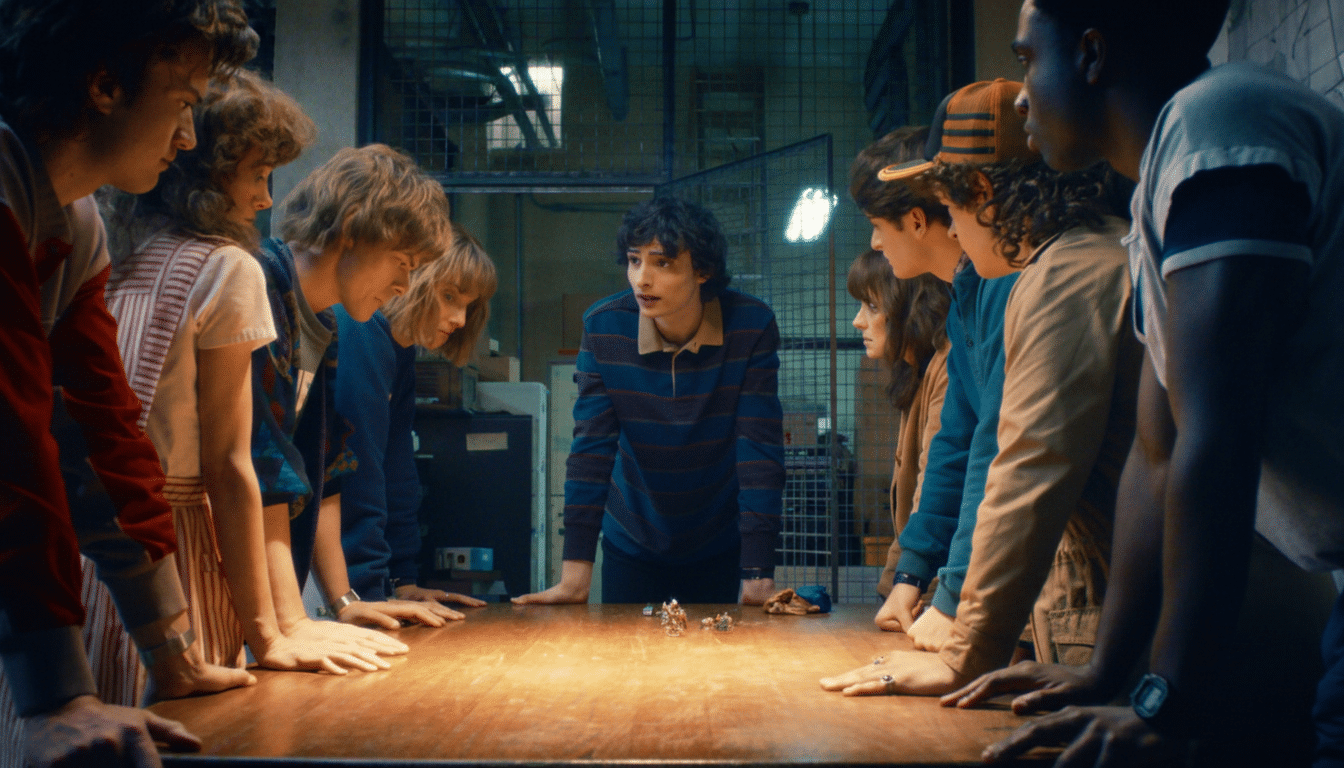Stranger Things doesn’t come back; it explodes. The film, the opening salvo of the fifth and final season, is a wallet-busting barrage of images that feels like it’s challenging TV to become tentpole cinema. It’s overstuffed, unwieldy and occasionally exasperating — but by God, I was glued to every shot, already tired and wanting more.
The Scale Is Both Thrilling and Enervating
Hawkins has learned to make do with apocalypse. A town under military quarantine warps the familiar into the surreal and the core ensemble, fighting through largely a single strike team rather than floating subplots, moves as one. The effect is propulsive and inclusive — everyone has skin in the game from the get-go — but it also means the season races before it can pause for a breather. Even what was once a background character — hello, Nell Fisher, now scene-stealing as Holly — gets pushed to the front and center, providing extra sweetness and yet another spinning plate.

The Upside Down is no longer just a haunted echo; it’s an action canvas. There are vehicle chases over ashy wastelands, aerial machinery roaring above and entire installations pulled into the darkness. Along the “dumb-cool” axis, a few of these sequences nudge toward dumb, raw power, and the longer we hang out in that murky biome, the more its mysteries dim. A five-minute prologue that reframes Will’s earliest days in the Upside Down doubles down on lore, while diminishing the primal fear that made the show’s origin story so powerful.
None of this escalation is unexpected. The series’ bonanza pivot had already been encoded in the movie-length episodes of Season 4 and their juggernaut scale — Netflix’s Top 10 page recorded over 1.3 billion hours watched in the first four weeks of that season going live, a sum surpassed only by a few global phenomena. Season 5 knows that hunger, and it answers with volume — sometimes too loudly.
When the Show Shrinks, It Truly Shines Brightest
With all of the airborne views and explosions, though, it’s the human-scaled moments that sting. Early gambits based on booby-trap ingenuity hark back to the scrappy Demogorgon showdown of Season 1 — a lesson in suspense and geography trumping CGI pyrotechnics. The re-emergence of flickering Christmas lights is a self-referential mic drop, definitive evidence that a single image carries more electricity than an entire platoon charging the void.
The show’s mythic sprawl is impressive, but so are its minimalist instincts. There’s less-is-more in Hawkins yet; the show can often be directionless that way.
Characters Keep the Heart of the Story Beating
What saves the season — and sometimes lifts it — is its attention to relationships. Hopper and Eleven’s father-daughter relationship has evolved from delicate to fierce, with Millie Bobby Brown playing a near-fully-formed action lead without losing the character’s core vulnerability. The original party — Mike, Will, Lucas and Dustin — are well-used and weathered in ways that seem natural for children toting around adult-sized traumas.

Dustin’s mourning for Eddie is refracted into a more melancholic alienation, whereas Lucas’ bedside vigils with Max ache with sincerity. The cultural echo of “Running Up That Hill” — which hit #3 in the UK and even cracked the top five in the U.S. per Official Charts and Billboard after its fourth season resurgence — is heard here less as a novelty than an emotional crutch. It’s both emblematic of the series at its best — pop nostalgia serving as character grammar, rather than mere window dressing.
New pairings help, too. Robin emerges as an unlikely mentor to Will, providing his arc room to breathe. Jonathan and Steve exchange rivalry for honesty, a détente that seems overdue and weirdly cozy. And bring on more Nancy-Mike sibling sleuthing — a grounding pairing as the plotlines proliferate.
Yes, the cast has all aged out of high school plausibility, a meme that the show never can seem to outrun. But that appearance of growth, anyway, underscores what the story’s telling us in other ways: These kids were cheated out of a normal adolescence, forced to grow old among monsters and secrets. The faces relate that story before the dialogue does.
Verdict: Exhausted Yet Eager for the Final Chapter
Season 5 comes off as a finale played across variations — beefier, louder and often indulgent. The lore pileups can suffocate mystery, and some set pieces mistake size for stakes. But the character work is strong enough to bear the load, and most of those nimble, small-scale sequences still sing. I’m exhausted by the bloat, but more committed than ever to this goodbye lap.
Stranger Things has shifted from being television to event storytelling, and you may regard that evolution as a feature or a bug, but the heart persists. Volume 1 lands with a thump and a heartbeat. Bring on the rest — I’ll gripe about it being too much on my way to pressing play.

